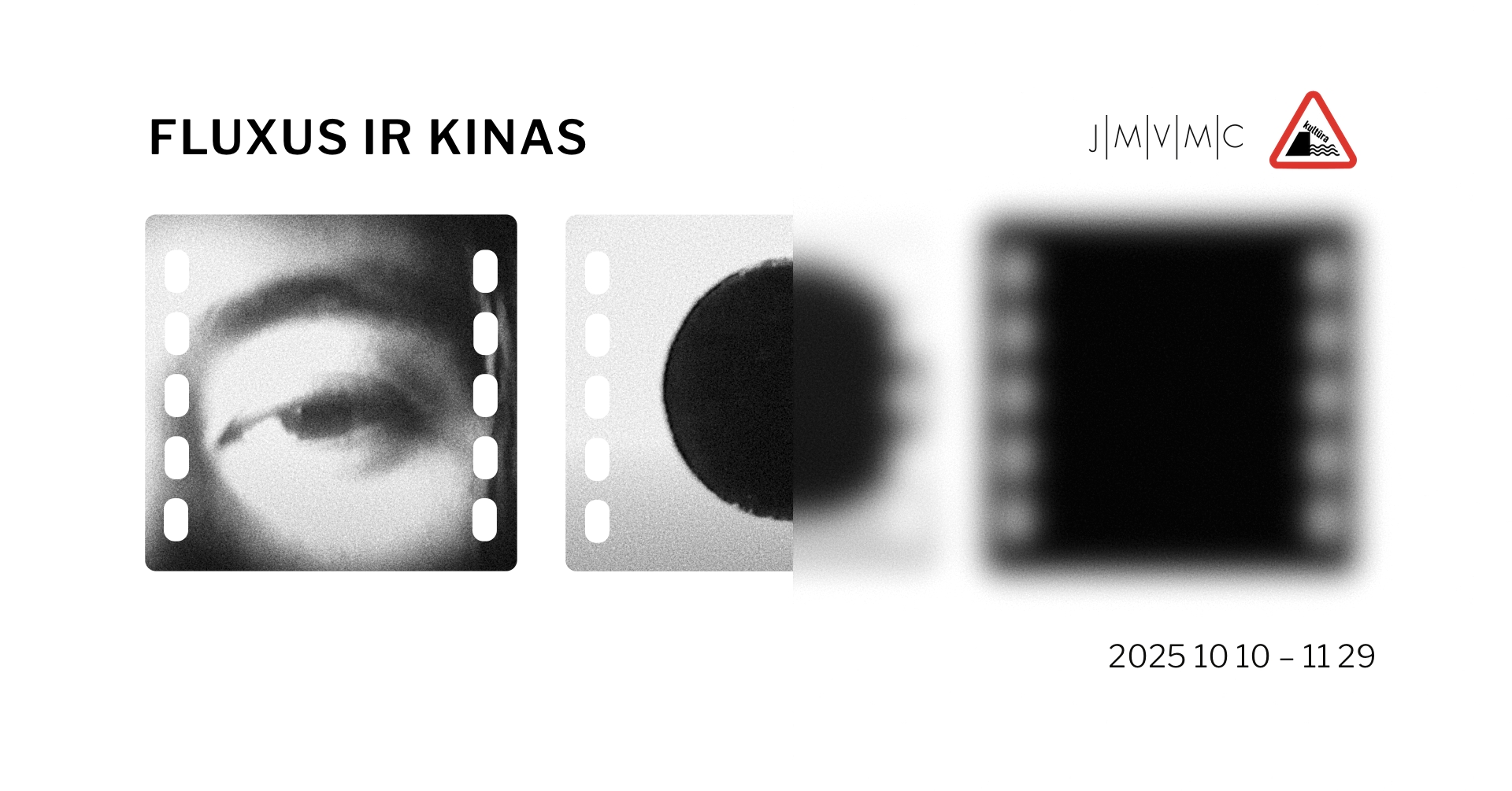
2025 10 10–11 29 Fluxus and Cinema | Exhibition
The exhibition opening will take place on Friday, 6 pm, October 10.
As Fluxfilm scholar Bruce Jenkins writes, “there are at least two types of Fluxus film: one consisting of about forty short films, most of which were created in the mid-1960s; and another – potentially open, encompassing almost any cinematic image perceived in a Fluxus way.” Fluxfilms remain a source of inspiration for filmmakers and contemporary artists today, and in the current climate of cultural protest they may serve as an example of courage to experiment and to fight for one’s beliefs.
Fluxfilms differ in their conceptual and aesthetic approaches. They are both intellectual and sensorial, ascetic and witty. Yet despite the diversity of expression, a deep kinship can be discerned. In one of the early reviews of Fluxfilms, Jonas Mekas wrote: “There is light; there is movement; there is a screen; often there is even a filmed image; yet it cannot be described or experienced in the way you would describe or experience Griffith’s cinema, Godard’s cinema, or even Brakhage’s cinema.” Flux-cinema requires a different vocabulary and a different state of mind for viewing, perhaps even a kind of preparation. But what still impresses is the filmmakers’ sense of freedom and the fire of their creativity.
This cinematic exhibition unites the experience of watching experimental film with a visualization of its dissemination. “Nam June Paik, Peter Kubelka, George Maciunas created films in which light itself became the image,” wrote Jonas Mekas. The viewer has the rare opportunity to explore a collection of Fluxfilms and, at the same time, to see how Fluxus founder George Maciunas designed covers for Jonas and Adolfas Mekas’s magazine Film Culture, as well as sketches for Anthology Film Archives posters and flyers. Here the Pop-art principle of reproduction is important, along with the use of frame sequences, repetition, and the motif of filmstrip. Also presented are several key photographs that capture central figures of the avant-garde cinema scene of that era: Andy Warhol, Jonas Mekas. The cover models were likewise familiar faces from Warhol’s circle of superstars: Paul America, Nico (Christa Paffgen), Benedetta Barzini, and others who participated in the filming of Warhol’s slow-motion portrait “screen tests.”
Most of the exhibits from the Fluxus collection of the Jonas Mekas Visual Arts Center include the designer’s calculations and handwritten notes. They create the impression that the viewer participates in the process not as an archival researcher, but rather as a collaborator – as if Film Culture were still in the making. Photographs, cover layouts, and Fluxfilms today continue to inspire the creation of new cinematic forms and the visual language of protest. Importantly, as Jonas Mekas once wrote of experimental film language, it should remain “so childlike and inventive.”
Curator Laima Kreivytė
___________
Visual identity: Ineta Armanavičiūtė.
Partner: Vilnius Cinema Studio
The exhibition is organized be Jonas Mekas Visual Arts Center.
The exhibition will run until November 29.
Event may be filmed or photographed. By attending, you agree that images may be used for JMVAC communication purposes.


